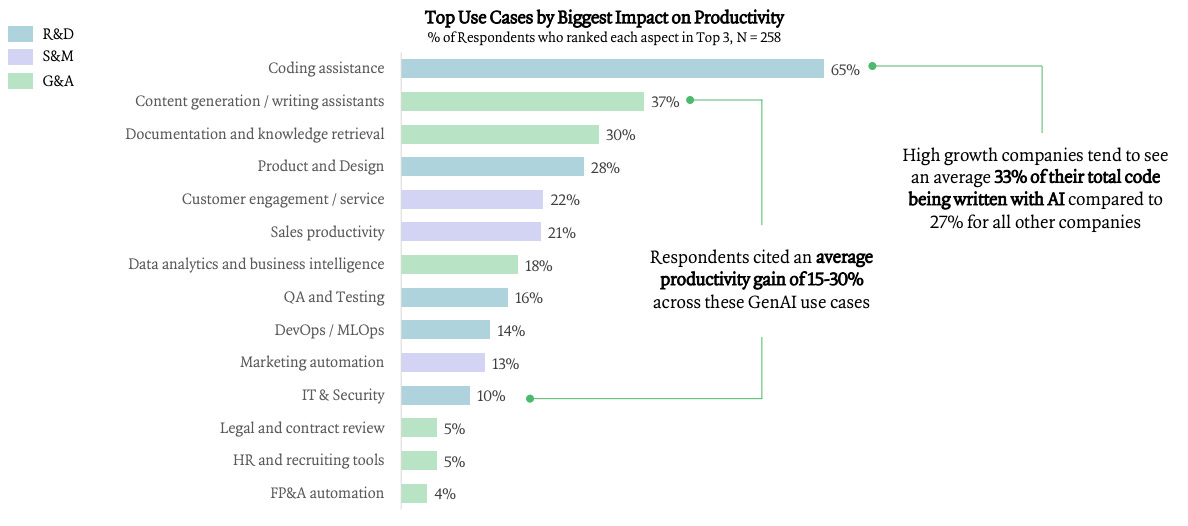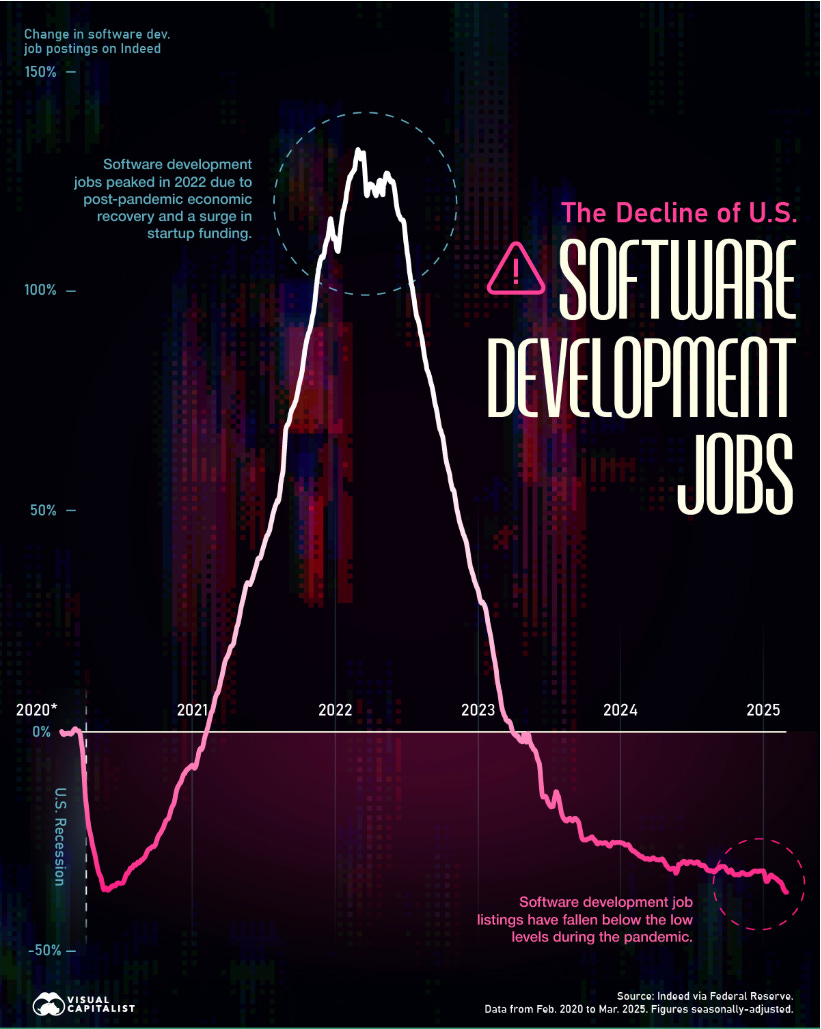Part 1: The AI R&D Team Compression
How engineering teams are shrinking, and why that’s not a correction, it’s a recalibration.
This is the first installment in a new series - AI - The End of Software as we Know It. How software is being rebuilt from the inside out - by AI, by infrastructure, and by teams that no longer look like the ones we scaled just five years ago.
The Illusion of the Tech Rebound
It would be comforting to think the 2022-2024 wave of tech layoffs was a temporary correction. That once macro conditions stabilize, the hiring engines will roar back to life.
But the data says otherwise.
This isn’t a pause.
It’s a reset.
Engineering teams are getting smaller, permanently. Not because demand is shrinking, but because the mechanics of software creation are changing.
Layoffs.fyi reports that over 645,000 tech jobs have been cut since 2022, with engineering bearing the brunt. Synthesizing this data with other public announcements of layoffs and productivity gains, I estimate that by 2030 engineering teams could be 35%-50% of their 2022 size.
The Productivity Shock
ICONIQ Analytics: The AI Builder's Playbook 2025 outlines how leading teams are shifting R&D investments. Internal AI productivity budgets are set to double in 2025 across all startup revenue tiers. According to respondents, we’re starting to see headcount budgets being used for those internal productivity investments. Across the ICONIQ portfolio, an average of 33% of a company’s total code is being written by AI.
As anticipated, engineering output has increased. According to Sundar Pitchai (Alphabet CEO), their Goose coding assistant has increased engineering productivity by 10%. GenAI tools like Goose are generating boilerplate code, auto-documenting endpoints, writing unit tests, and performing debug and code performance optimization tasks. And it’s expected that there will be a multiplier effect. These productivity gains will compound over time.
Increased Engineering Velocity
Investments in AI productivity tools are compressing the time-to-build. That’s exciting news for companies and customers. But in what way are software companies accelerating? Both GitHub and outside researchers have observed a positive impact in controlled experiments and field studies where Copilot was used:
55% faster task completion using predictive text
Quality improvements across 8 dimensions (e.g. readability, error-free, maintainability)
What does that mean to the overall engineering organization?
Even though 25% of code is reportedly AI-produced within Google, they maintain that AI is not taking away employees’ jobs. Instead, AI enhances their capabilities and enables them to focus on higher-level tasks.
But the public numbers don’t support this.
The Hiring Cliff
As noted above, Layoffs.fyi tracked over 645,000 tech layoffs from 2022. These cuts have been across Meta, Google, Amazon, Stripe, Microsoft, etc. All of which cut deeply into engineering. What began as overcorrection to the hiring bonanza during COVID and ZIRP is now strategy: leaner teams, higher leverage. And that’s showing up in the macro-numbers, according to Indeed and the Federal Reserve.
The Squad Restructured
Starting now, everything needs to change. How squads are structured, run, and operated going forward.
Keep reading with a 7-day free trial
Subscribe to Beyond the Build to keep reading this post and get 7 days of free access to the full post archives.



